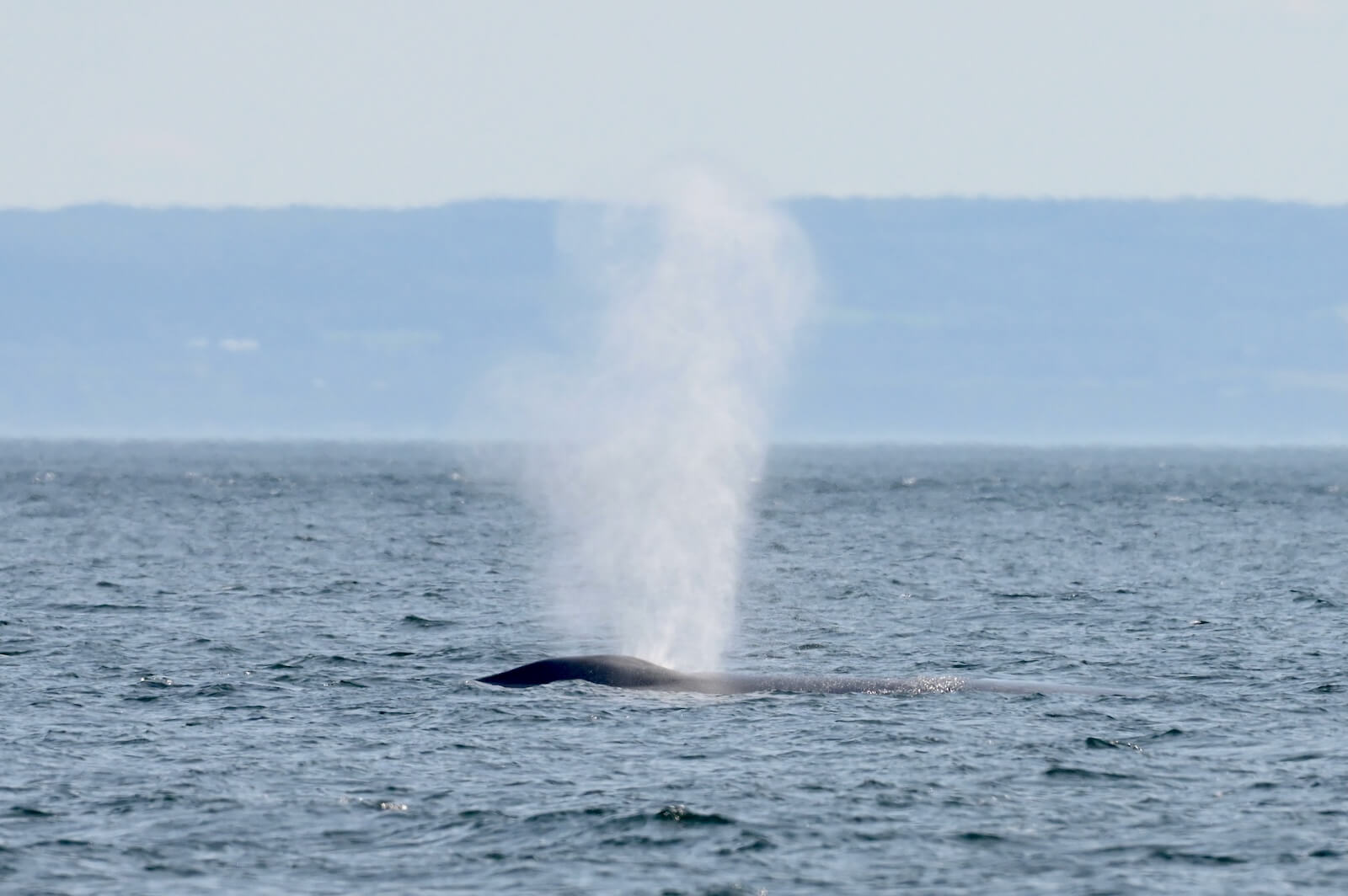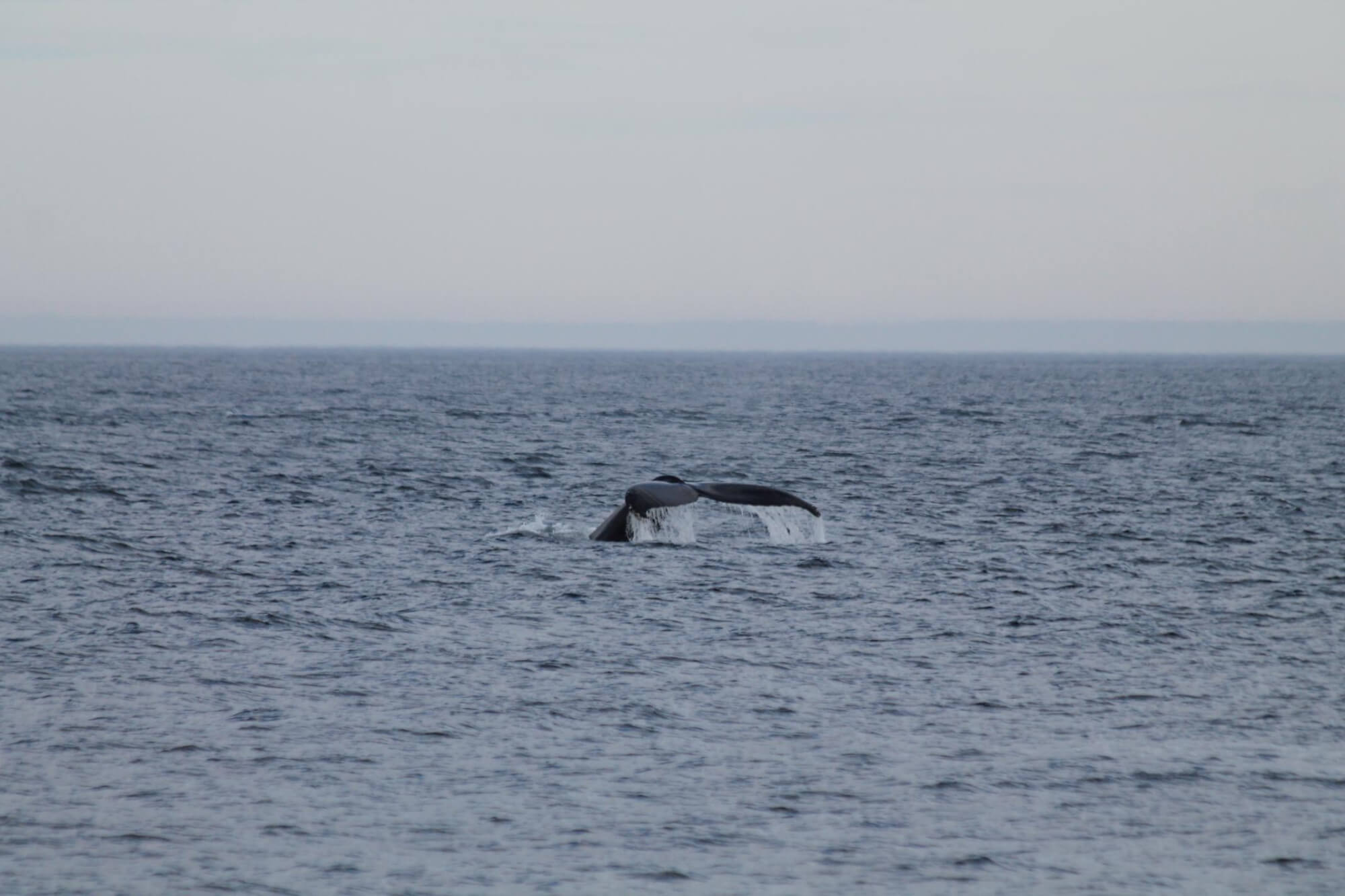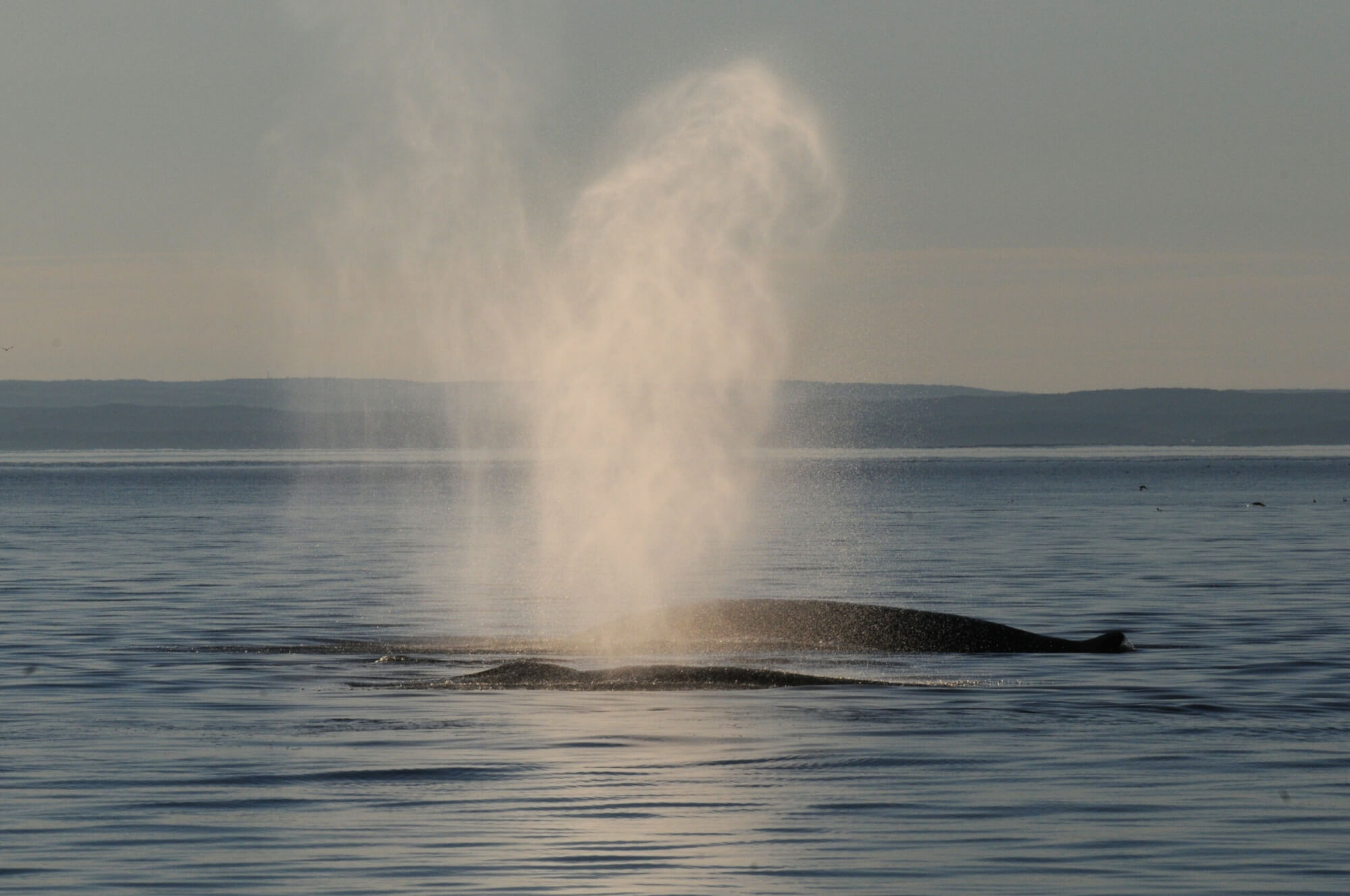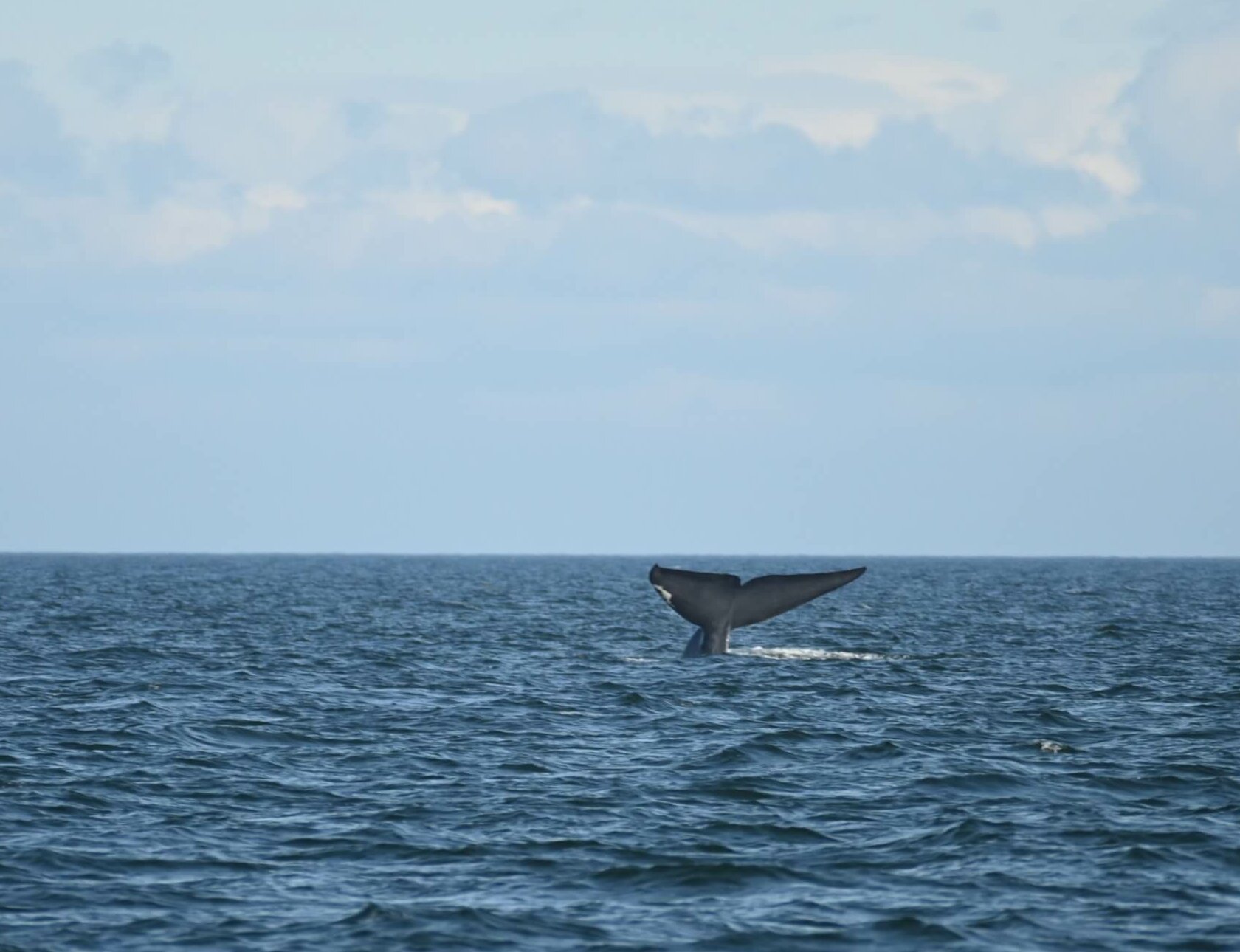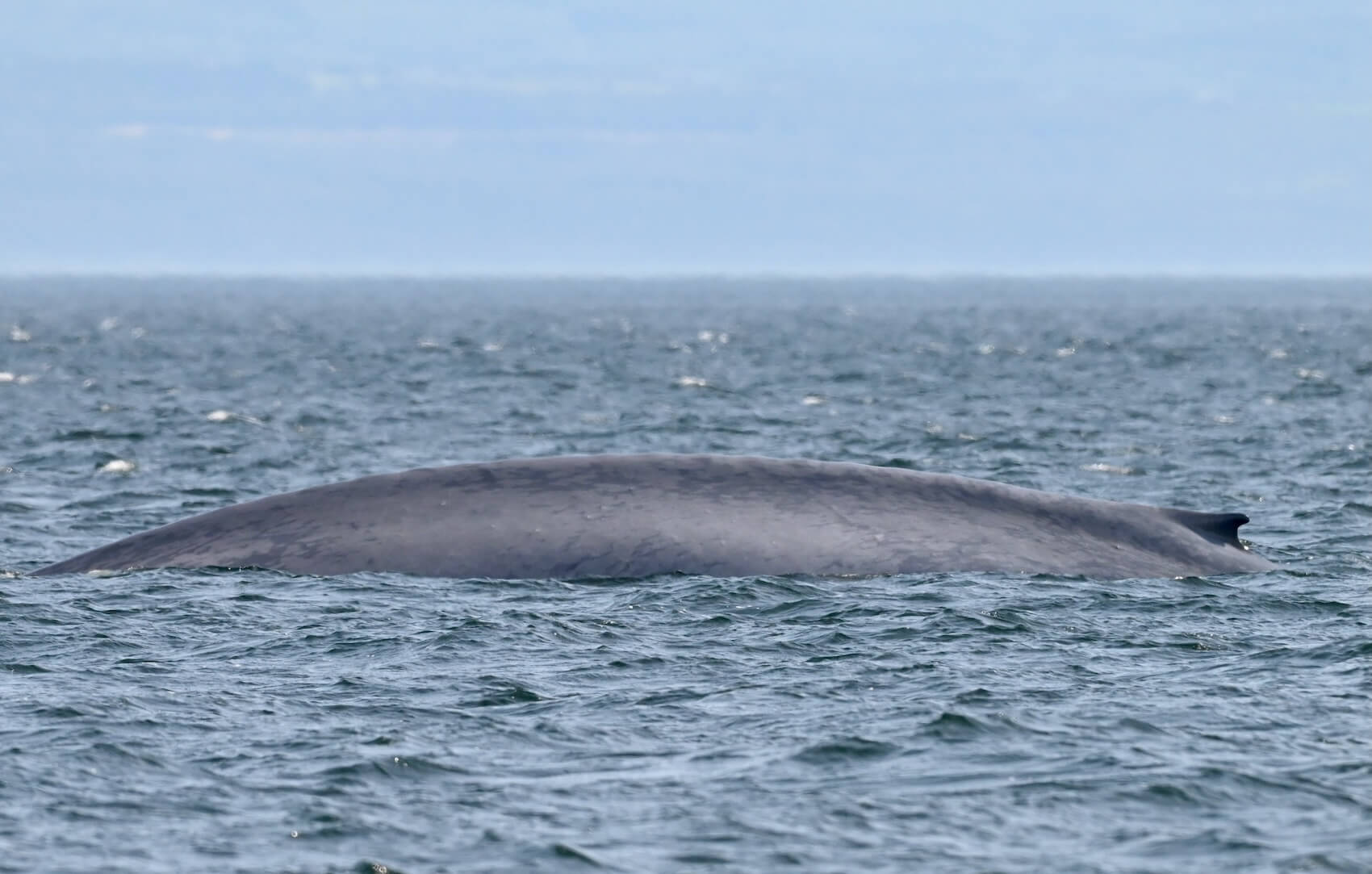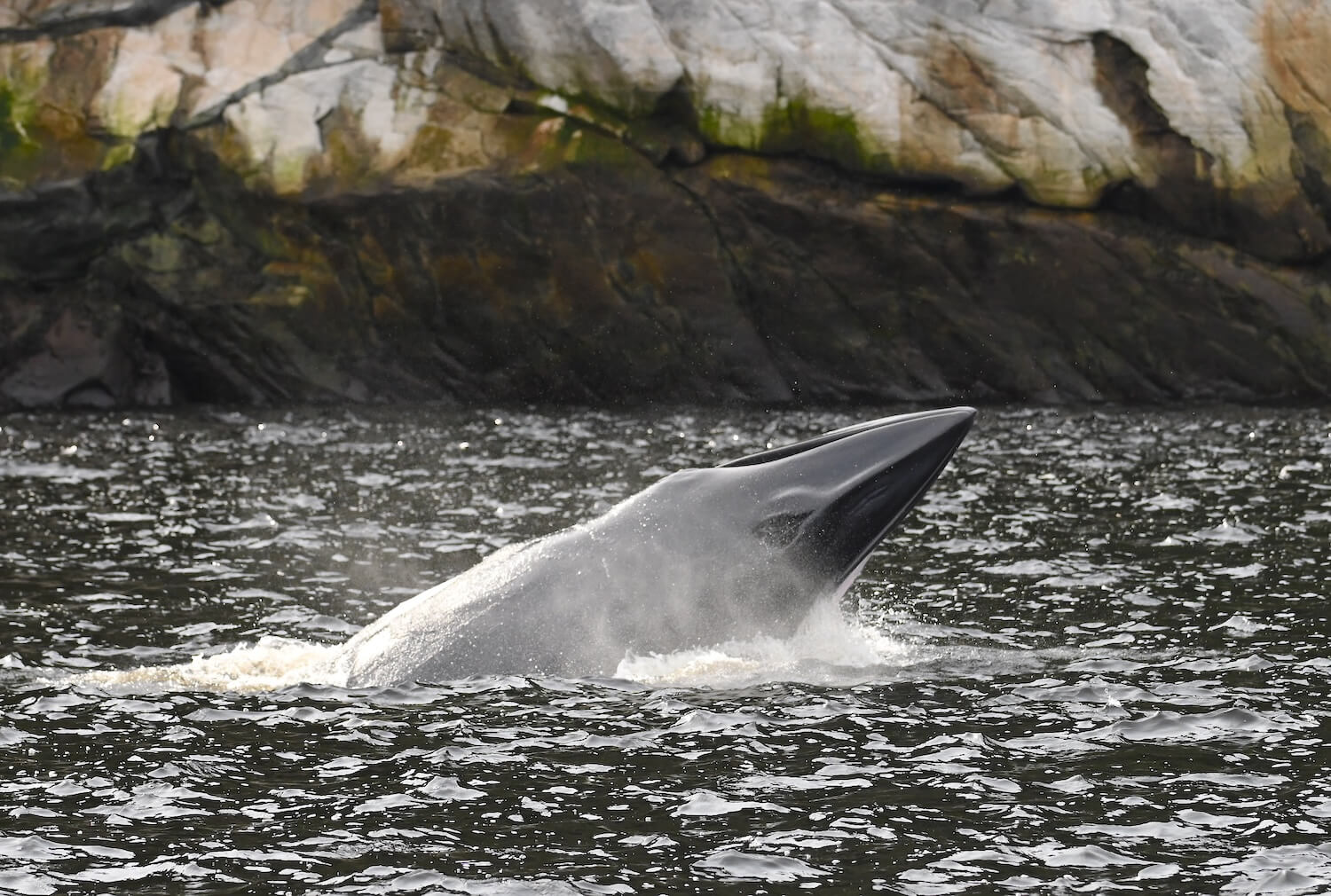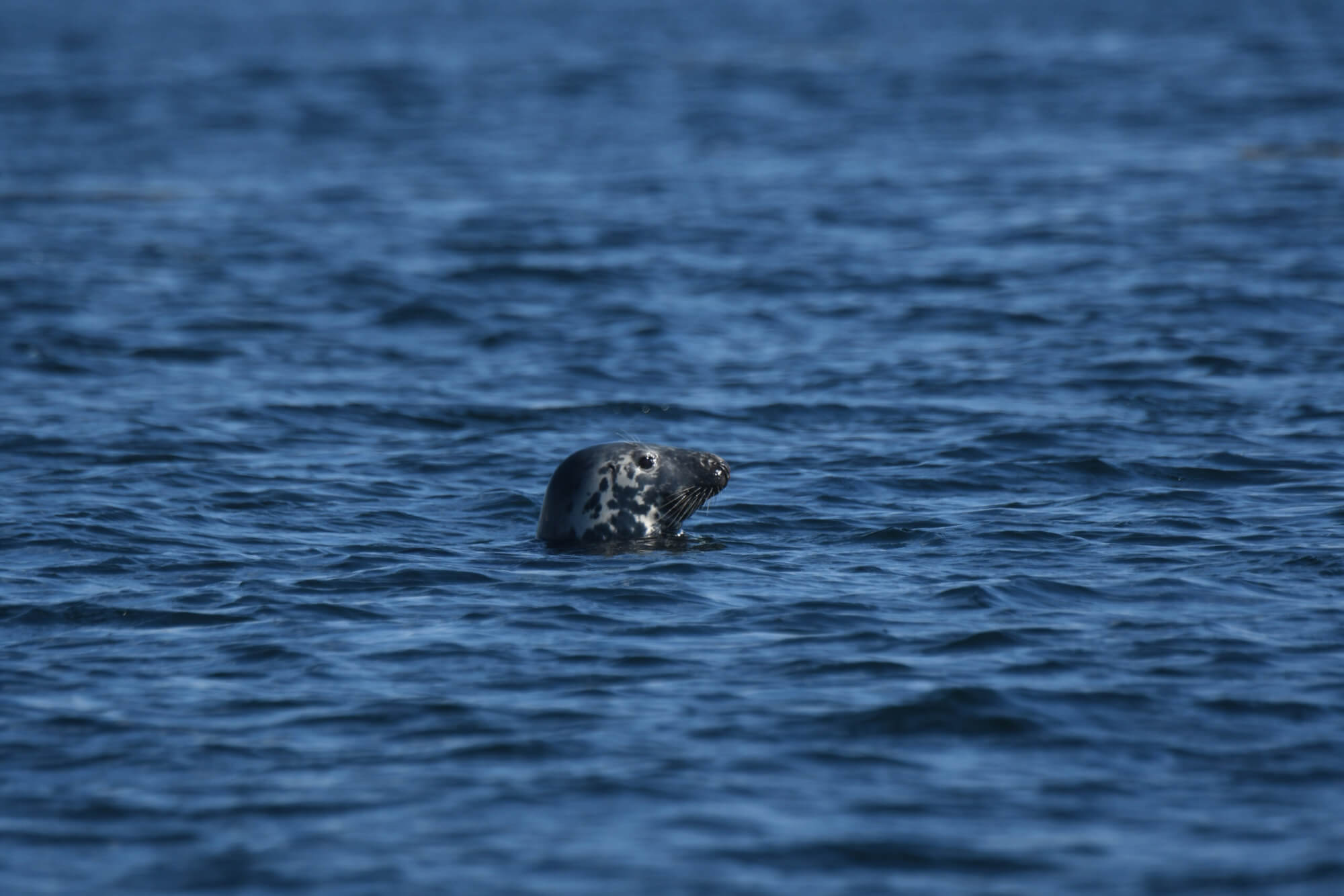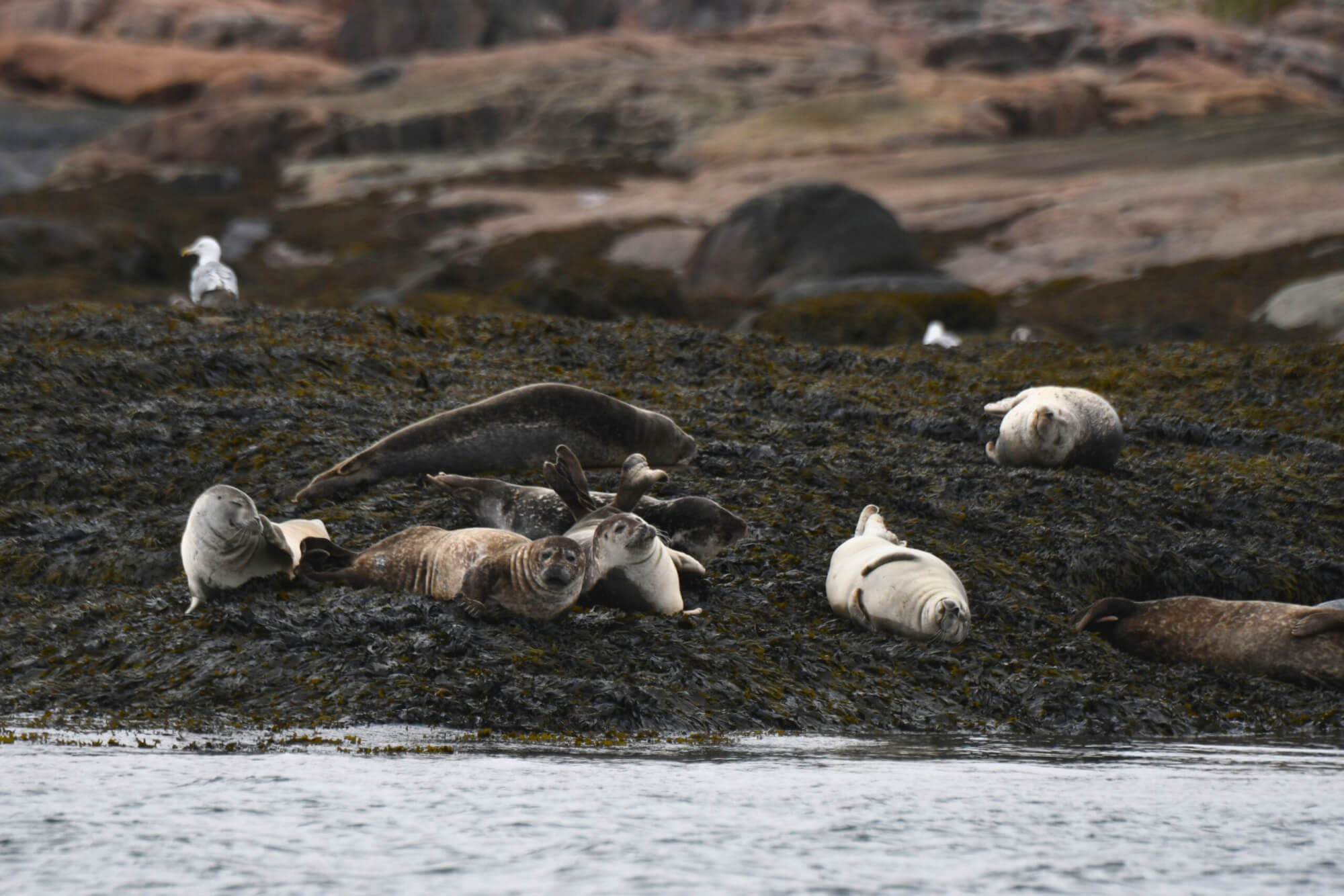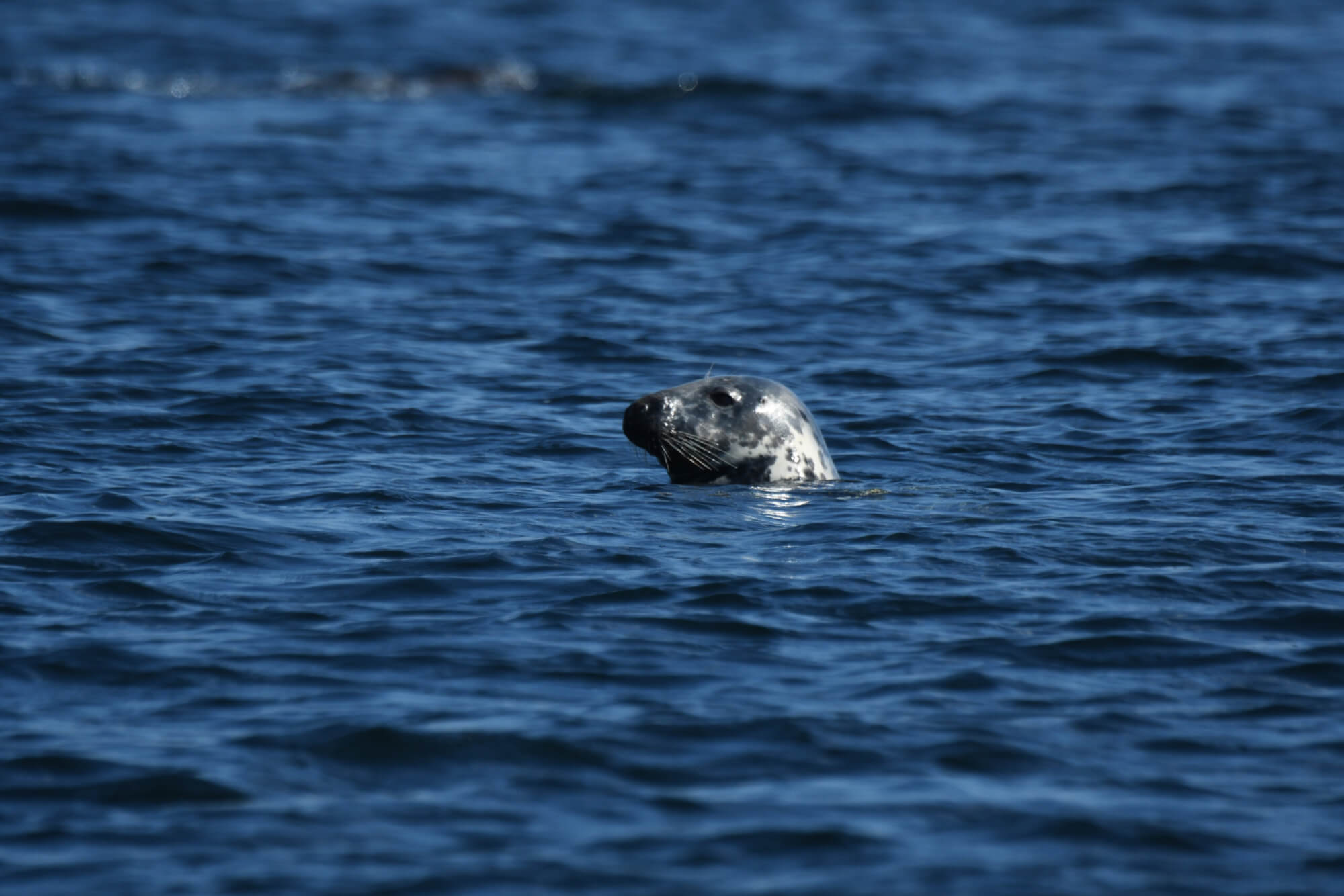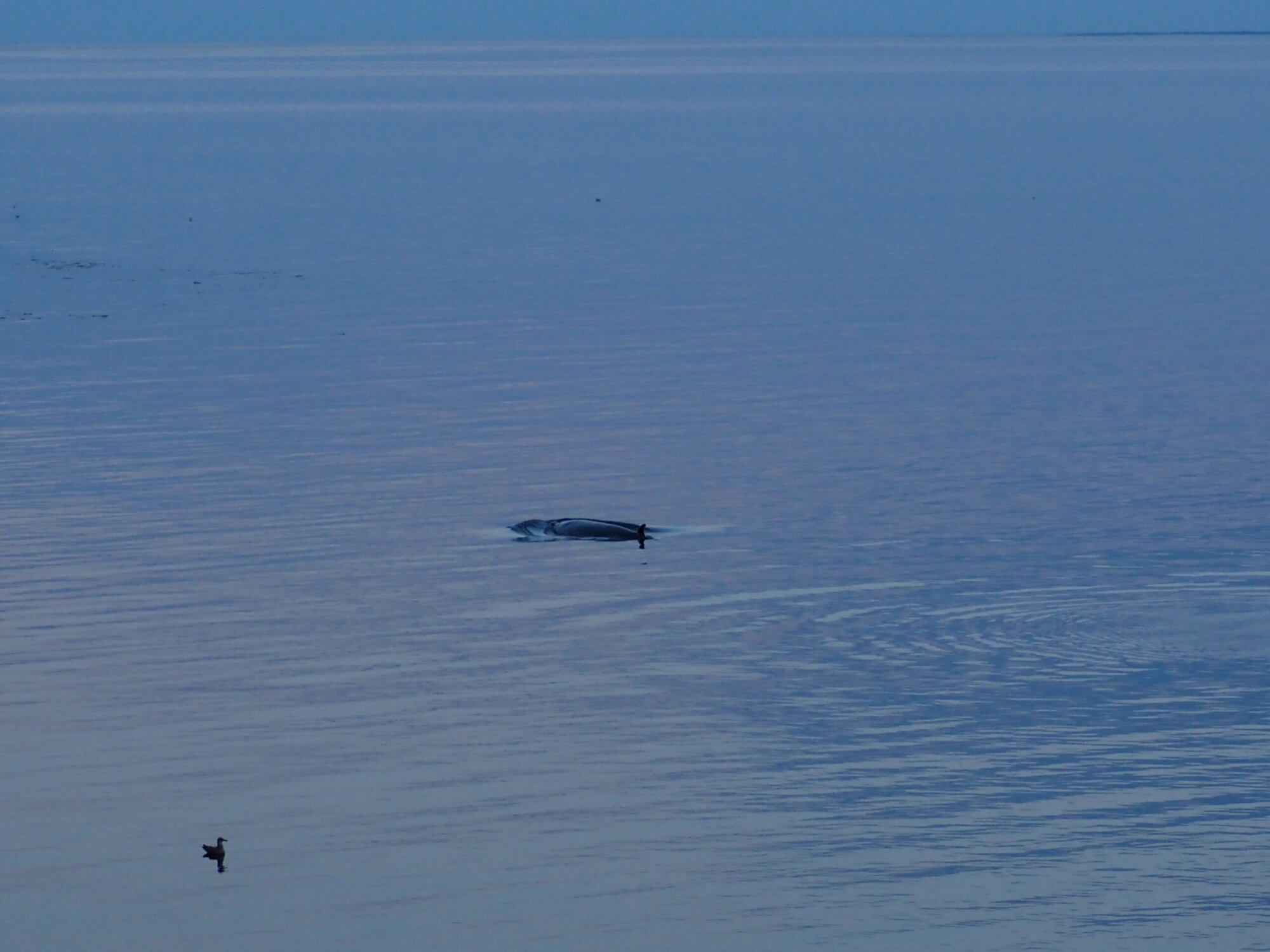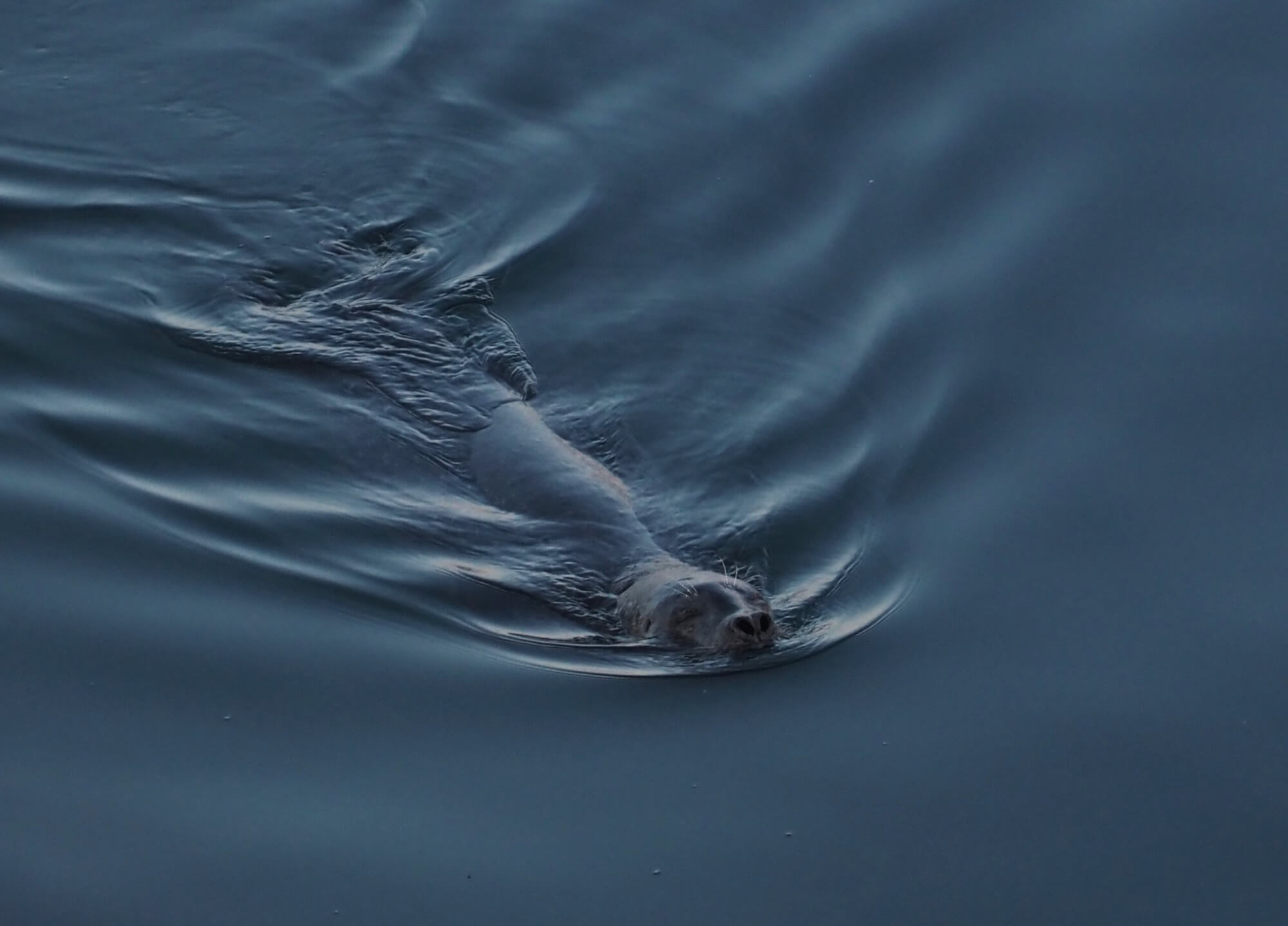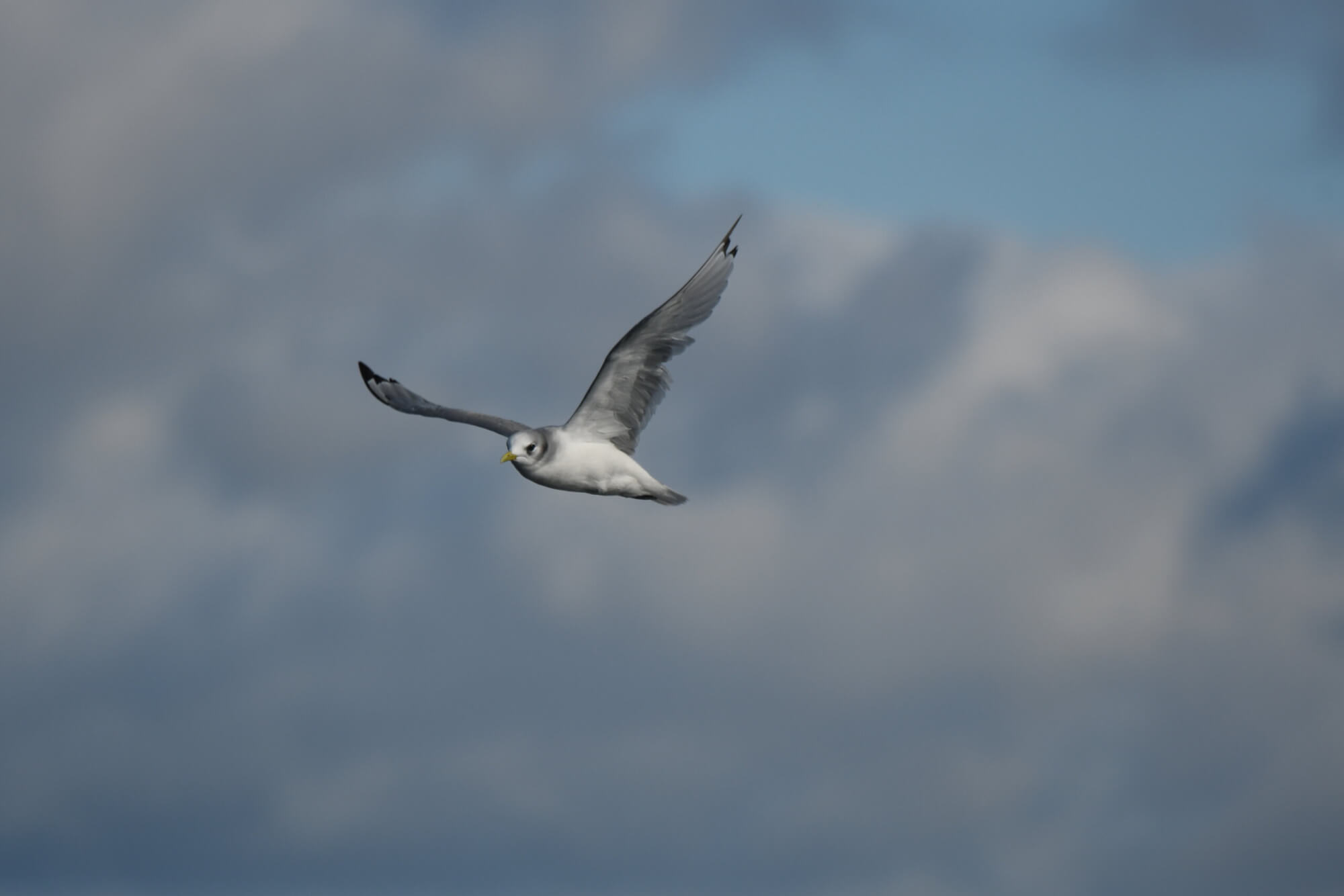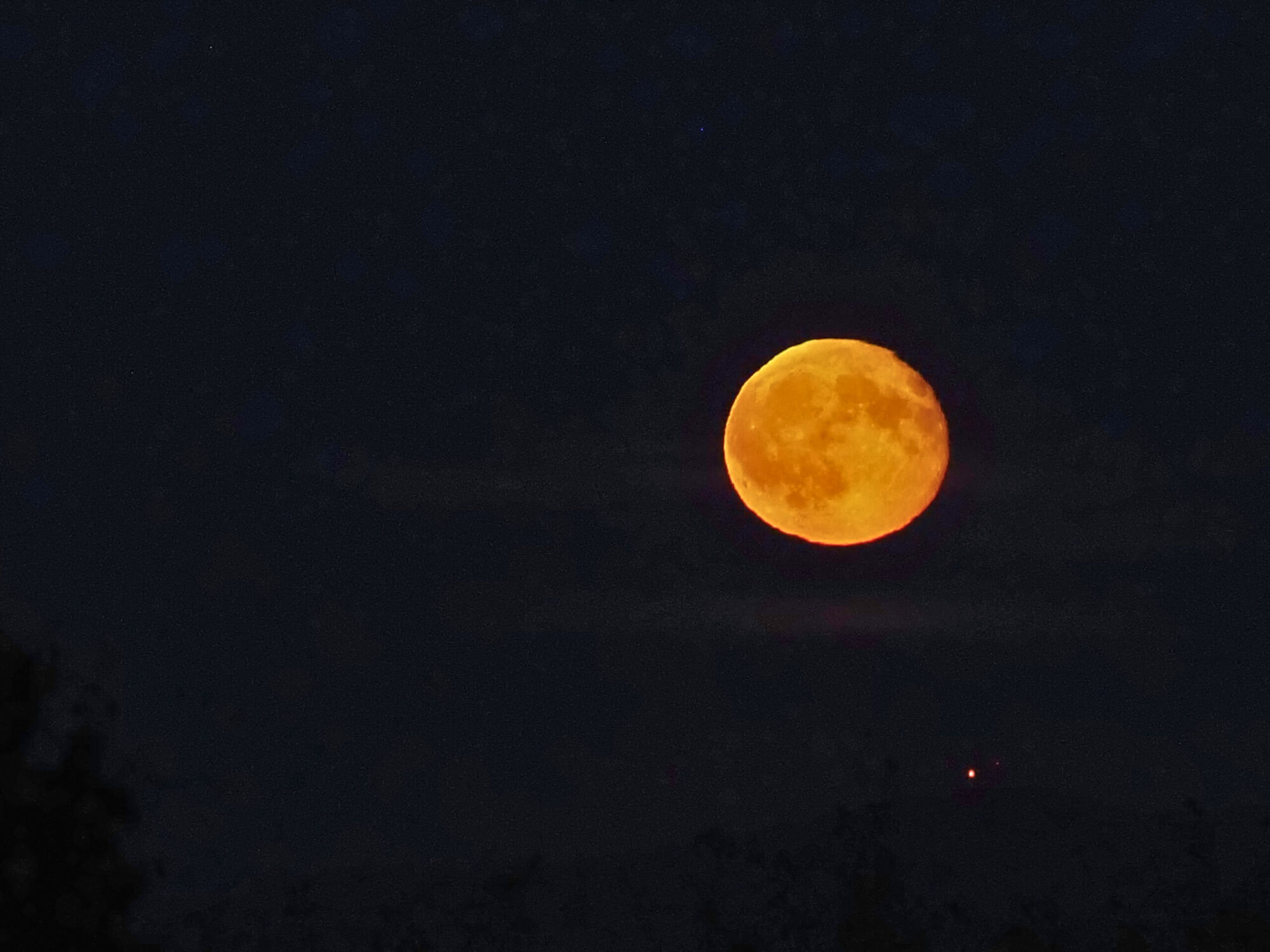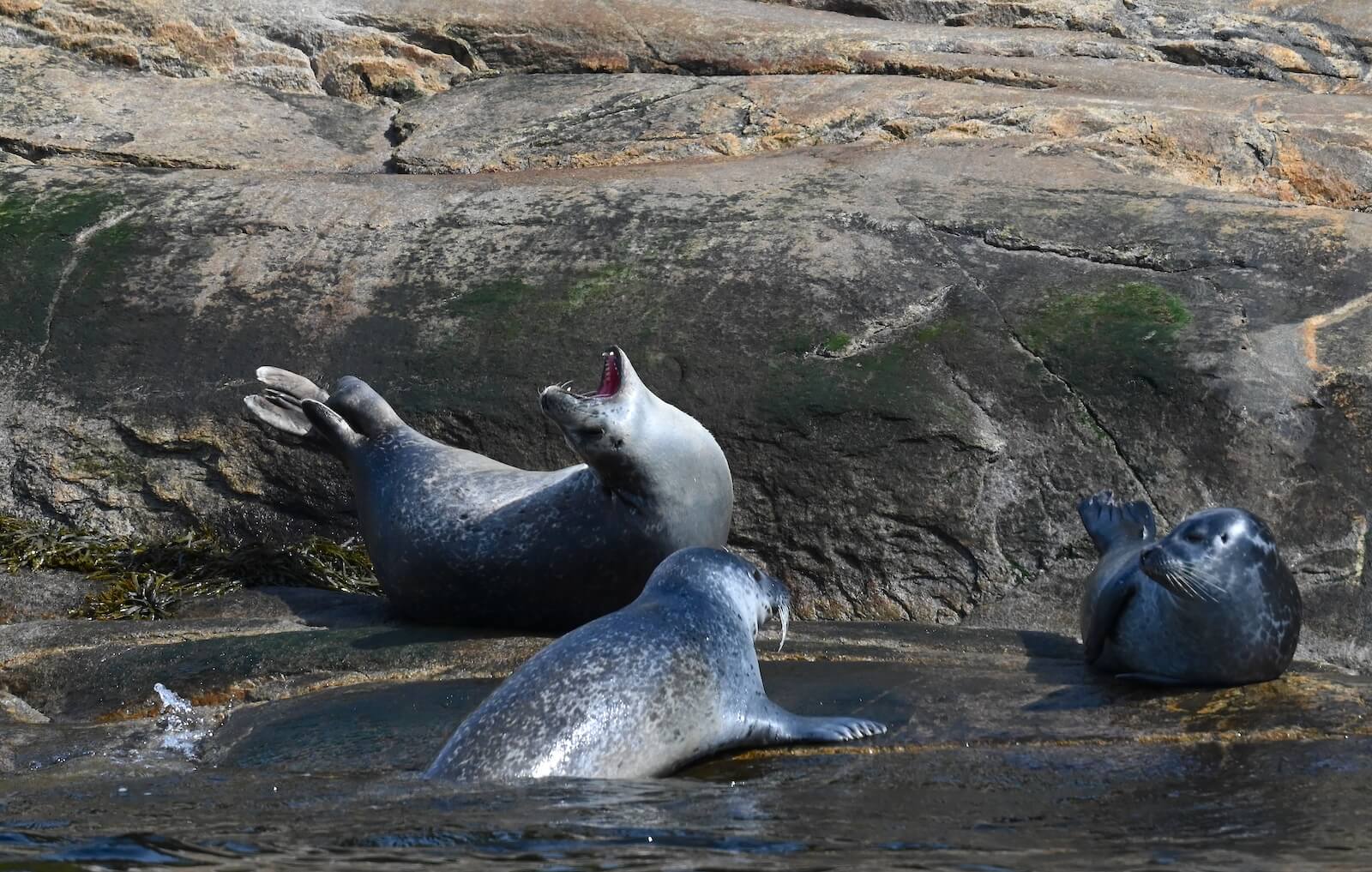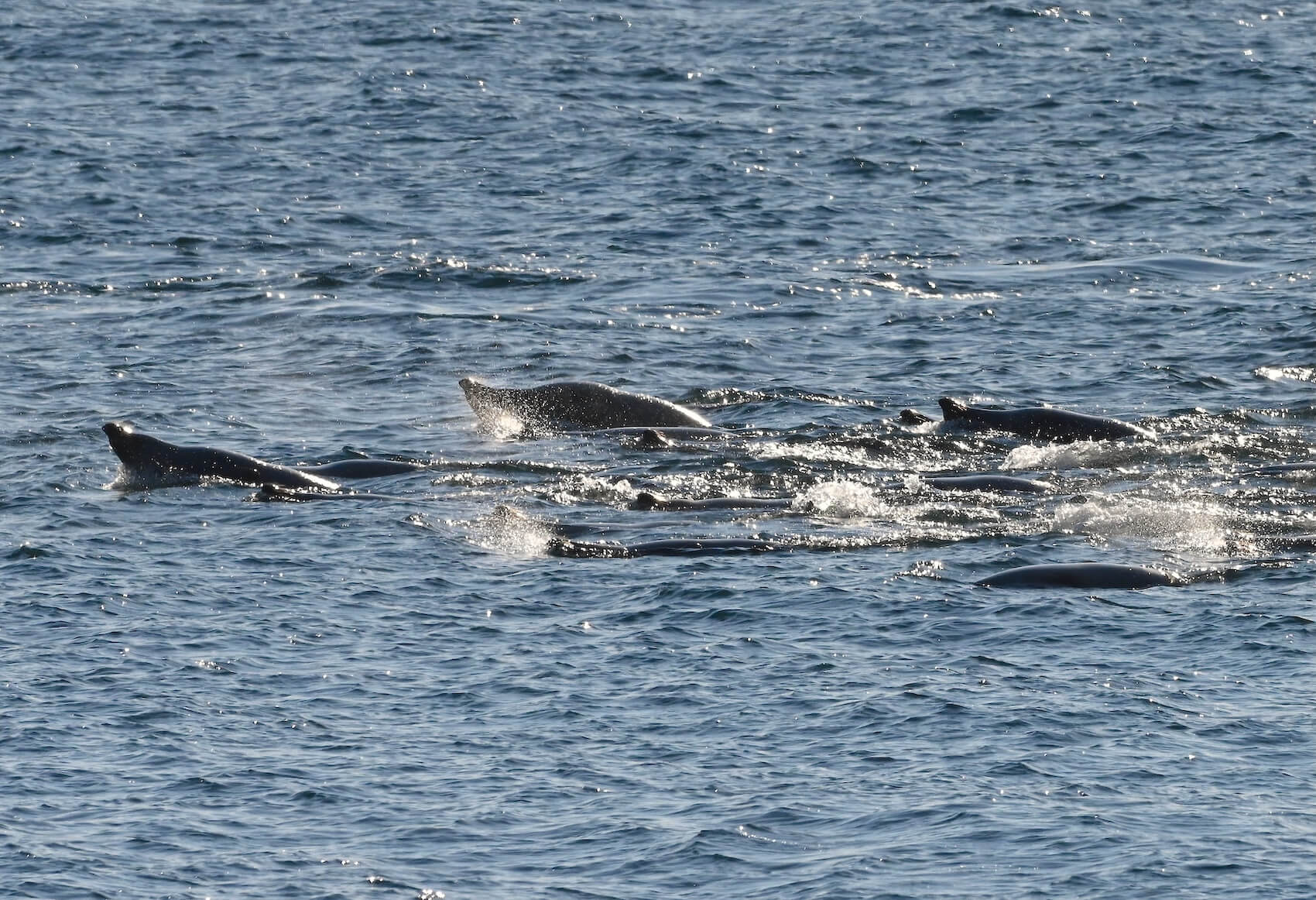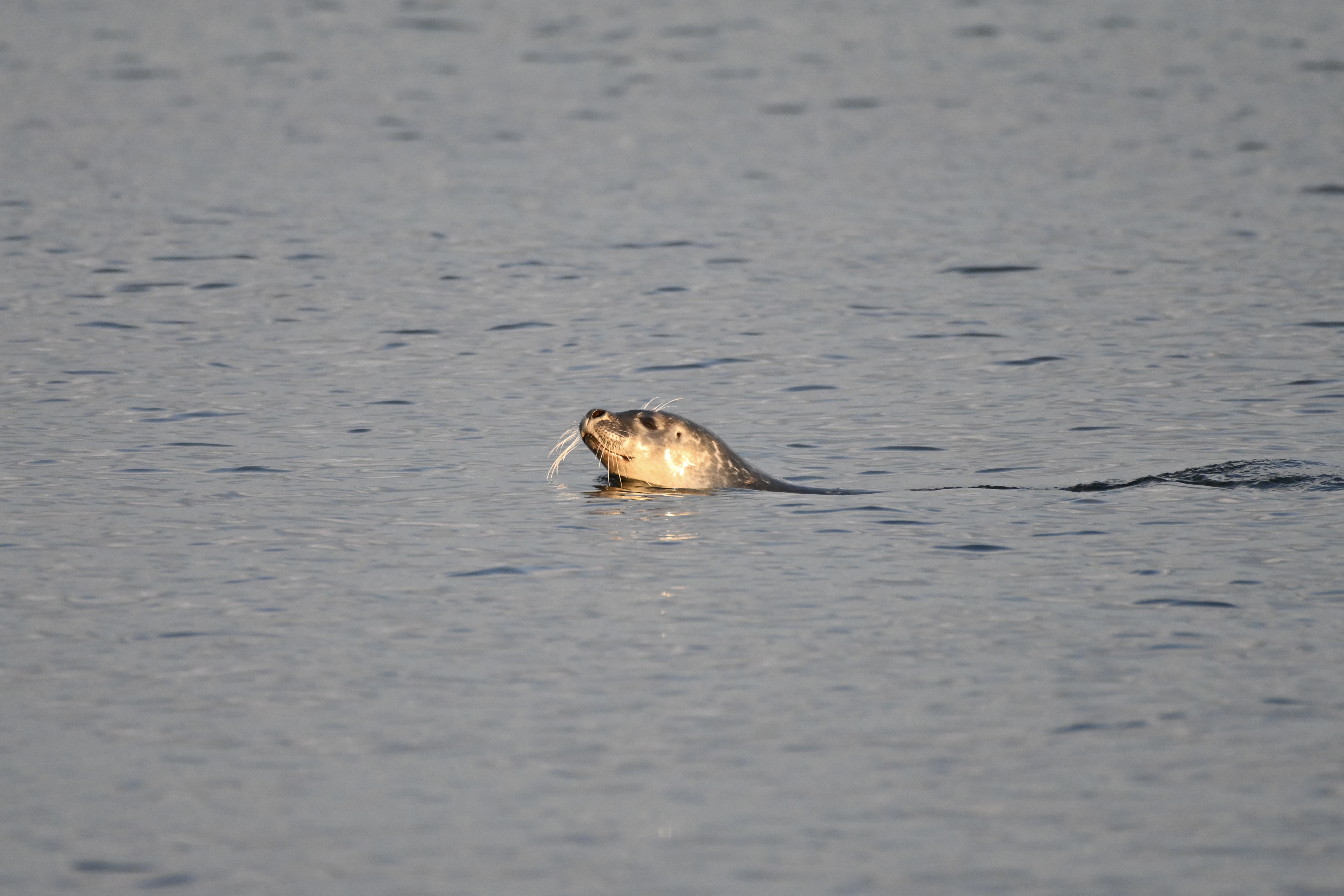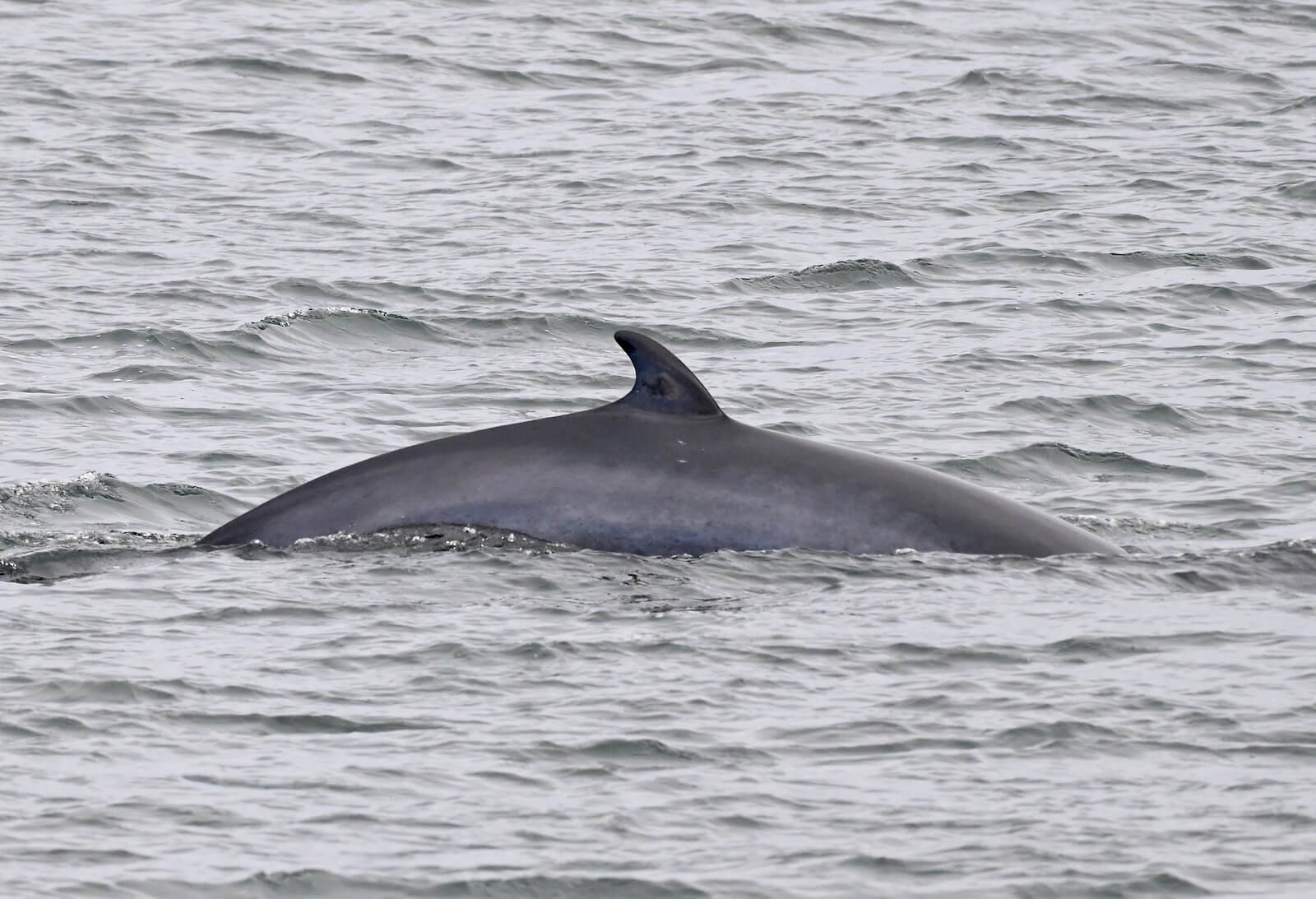Large rorquals remain very much present in the Gulf of St. Lawrence, while a few roam here and there in the estuary, including an old acquaintance. Reports of belugas have been scattered: A few groups have been seen in Portneuf-sur-Mer, while they are still being regularly observed in Cacouna and the Saguenay Fjord. Meanwhile, in the estuary, it’s seals that have been stealing the spotlight!
Baleen giants
In the Gaspé region, the whale-watching season is still as busy as ever! Just beyond Gaspé Bay, up to three fin whales, two humpbacks, and a blue whale wowed observers with their distinctive blows that could be seen from shore. Accompanying this impressive visit were several minke whales, harbour porpoises, and white-sided dolphins. Grey seals were observed in the water, while harbour seals were seen by the dozens on the rocks in Gaspé Bay.
In the Matane area, a colleague from the Mingan Island Cetacean Study (MICS) spotted three blue whales, two fin whales, and two humpbacks during a nine-hour outing: “The animals were close to shore, so food must have been plentiful there, too,” he explains.
Just last Tuesday, humpback whale H859 was seen meandering between the islets known as Îlets Boisés, past Les Escoumins and Les Bergeronnes! That same day, two observers witnessed a powerful breach by a humpback in Les Escoumins… Was it H859?
In Franquelin, a large whale made a brief appearance before disappearing into the blue depths. One cetacean enthusiast writes in:
“Between Baie-Comeau and Franquelin, I saw a fin whale moving through. It blew three times, dove, and I didn’t see it again after that… Our magnificent greyhounds of the sea!”
Where was it going, and where did it come from? Impossible to say for sure, meaning its identity will forever remain a mystery! Using quality photos of the animals’ dark backs and dorsal fins and the techniques of photo-identification, research teams can piece together the paths taken by large rorquals through the St. Lawrence!
A few of these slender, grey, white, and black marbled rorquals have turned up in the estuary: one off Longue-Rive, and another (or perhaps the same individual) in Les Escoumins. Known as Ti-Croche (Bp955), this fin whale even purportedly made an appearance off Tadoussac.
Last week, in the Portneuf-sur-Mer area, a passionate naturalist and captain was able to observe “legendary whale” B246 a.k.a. Jaw-Breaker, but due to poor weather the next day, “We lost track of her,” he reports.
Old friends, new sightings
Not far from Petite-Rivière Bergeronnes, an old acquaintance resurfaced. It was B324, a female blue whale known since 1995 but who hadn’t been photographed in the estuary since 2017. Sighted a few times in the region, sometimes in the estuary, sometimes off the coast of Gaspésie, this observation marked just her 10th visit to the St. Lawrence! In 2017, captains noticed unusual behaviour in this species of whale. B324 regularly expels air through the orifices of her blowhole before she emerges, creating a spray of water at the surface. Because of this original habit, captains like to call her “Fontaine” (fountain).
Minke whales and big belugas
From Tadoussac to Franquelin, minke whales throughout the estuary continue to amaze with their ever-impressive acrobatics, revealing their bellies swollen with water… and little fish! At the mouth of the Saguenay, diligent observers recorded at least six individuals, most of them in the process of surface feeding!
In Baie-des-Sables, two nature lovers patiently await the now-daily arrival of a highly punctual whale: “Since Sunday, we’ve been lucky enough to observe a minke whale at high tide in the afternoon, swimming to and fro near the docks. It passed so close that we could clearly hear it when it exhaled. Hopefully we’ll see it again today.” Ultimately, patience is the mother of all virtues, and the whale reportedly “came [back] to swim near the Baie-des-Sables marina” the following day, describe the enthusiast whalewatchers.
Several groups of belugas have been wandering the fjord and estuary, including “a group of large white ones… We were able to see as many as four at a time, but there might have been as many as twenty,” excitedly report a couple of tourists passing through Portneuf-sur-Mer. From L’Anse-de-Roche, three observers had the pleasure of watching dozens of these white whales’ sparkling spouts in the low light of the late afternoon.
A parade of seals
Dozens of harbour porpoises were observed in Les Escoumins, along with minke whales and a slew of grey and harbour seals! With regard to the latter, one observer noticed some rather atypical behaviour: “In addition to a few grey seals, there were seven small harbour seals that were very dynamic. After swimming for a while in tight formation, they took a sudden dive and started creating underwater whirlpools!” Not far from Rivière-du-Loup, an observer reported a similar phenomenon: “I had a group of 15 harbour seals, one of which was jumping out of the water. I’ve seen groups of grey seals before, but never harbours. Since this observation, I feel like I’ve been spotting more this week. […] Usually, we might see a single harbour seal.”
In Franquelin, one whale enthusiast reported a herd of about 100 grey seals! A group of approximately 75 grey seals also surfaced near Cap de Granite in Tadoussac. These pinnipeds regularly congregate to feed. Not far from there, locals even had the good fortune to identify a bearded seal! For this Arctic species, this is a rare but not unheard of phenomenon (article in French) in the St. Lawrence.
Rich assortment of cetaceans in Mingan sector
The Mingan Island Cetacean Study (MICS) shares its most noteworthy sightings of the week: up to fifteen minke whales, seven fin whales, six humpbacks, and two blue whales, as well as 25 white-sided dolphins and three North Atlantic right whales. According to MICS, this is “definitely not a good year for humpbacks, but it is for blues.” The team has already tallied around 70 individuals since spring, compared to 135 in 2019. In addition to a few basking sharks here and there, the group also observed an ocean sunfish (also known as a common mola)! According to the founder of MICS, blue whale B275 (Phoenix), a regular visitor to the estuary, has been lingering in Sept-Îles for almost a month now.
The beauty of the sea under the moonlit sky
The sky is veiled in a periwinkle mantle, the water is cloaked in powdery tones, and the wind is now just a whisper as a coppery full moon rises over the St. Lawrence. Fall might be around the corner, but warm weather is still here, allowing any observer to admire the bounty of life the waters of the St. Lawrence have to offer. The tides come and go, as do the marine mammals. While old acquaintances resurface, some of our regulars continue to search for food before heading back out to sea for their winter migration to more suitable waters for breeding and calving. The cycle of life is continually unfolding here, right before our eyes!
Where are the whales this week? Observation map
These data were reported by our network of observers. They give an idea of the presence of whales and in no way represent the actual distribution of whales in the St. Lawrence. Just for fun! Click on the whale or seal icons to discover the species, the number of individuals, additional information or photos of the sighting. To enlarge the map, click on the icon in the top right-hand corner.
The map works well on Chrome and Firefox, but not so well on Safari. To display the list of sightings, click on the icon in the top left-hand corner.
Thanks to all our collaborators!
Special thanks go out to all our observers who share their love for marine mammals with us! Your encounters with cetaceans and pinnipeds are always a pleasure to read and discover. On the water or from shore, it is your eyes that give life to this column.
Marie-Andrée Charlebois
Sylvie Carré
Krystal Chandler, ROMM
Raymonde et Marcel Cousineau
Lilly de Cotret
Laeticia Desbordes
Christine Harper
Stéphanie Houde
Laurence Tremblay
Kathleen Luyat
Lily-Rose Mcgrath
Mathieu Marzelière
Diane Ostiguy
Renaud Pintiaux
Pascal Pitre
René Roy
Guillaume Savard
Guy Synnott
Marielle Vanasse
And to all the others!
Additionally, we would like to acknowledge the following teams that also share their sightings:
Centre d’éducation et de recherche de Sept-Iles (CERSI)
Station de recherche des Îles Mingan (MICS)
Réseau d’observation des mammifères marins (ROMM)
Réseau québécois d’urgence pour les mammifères marins (RQUMM)
Groupe de recherche et d’éducation sur les mammifères marins (GREMM)
Mériscope
Would you also like to share your observations?
Have you seen any marine mammals in the St. Lawrence? Whether it’s a spout offshore or just a couple of seals, drop us a line and send your photos to [email protected]!


